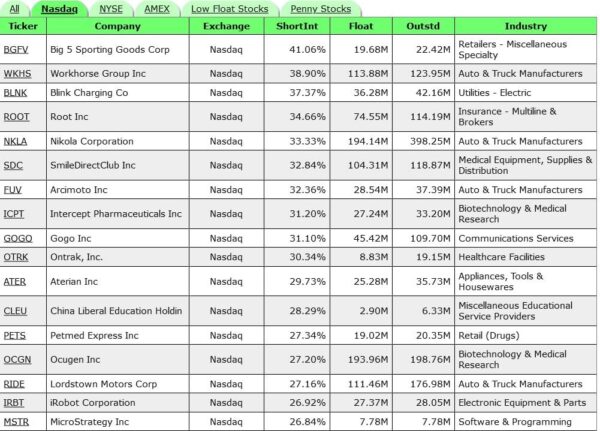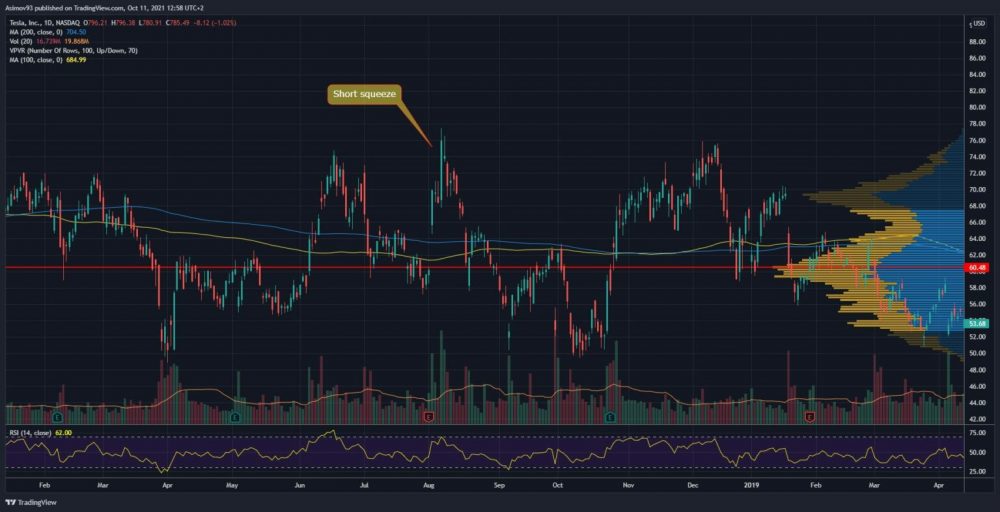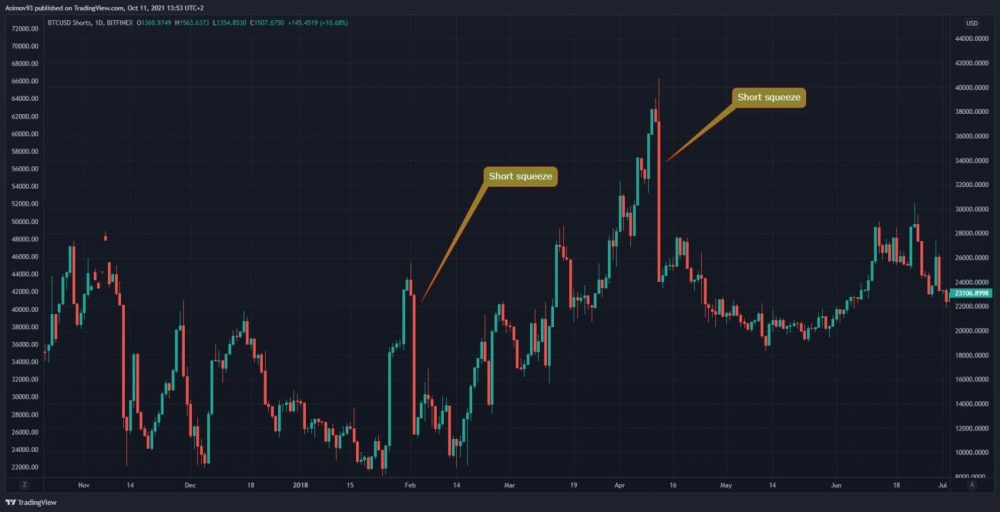Short Squeeze – What is it?
4 min readTable of Contents
Short squeeze is an unusual event that occurs as a result of rapidly rising prices of exchange-traded assets. Everyone who has experienced the wild years of 2017/2018 at BTC must keep these events in mind. At that time, it was not really such an unusual event, because short squeeze occurred quite often.
What is a short sale?
Short sales are slang in our basin as “shorts”. Or in our language it is formally called “short selling”. Short sellers borrow someone else’s asset with the intention of selling it immediately. Because they speculate on a decline in the price of the asset. However, once they close a short position, they must automatically repay the principal and interest for the loan. Short sales are, of course, carried out on a margin, called leverage.
If the price falls, as the short seller expected, buys the asset at a lower price, so makes a profit. When he misses and the price goes up, he has to buy the asset back at a higher price, so he has a loss. So when the short-seller makes a profit, he keeps the difference and pays only the principal and interest. If he has a loss, he is unlucky and must repay the loss from his collateral and return the principal and interest to the original owner of the assets. It follows that a short sale is not logically possible without the short seller providing a collateral to which he is liable when he sells.
How does short squeeze come about?
Short sales are made in large volumes through futures contracts. Therefore, if the price of a short-sale asset rises unexpectedly fast, short-sellers must act quickly to have some control over their losses. In the worst case, they have to involuntarily close a short position, as there is a risk that their collateral is no longer sufficient to cover losses.
If this happens, the shortsman will receive the so-called margin call. The Exchange will thereby invite the position holder to increase its collateral or close its position. However, in a period of rapid market turbulence, the liquidation of short positions may come unexpectedly and the holders of these positions will not even have time to increase the collateral.
Am considering taking Tesla private at $ 420. Funding secured.
– Elon Musk (@elonmusk) August 7, 2018
A typical example is Tesla shares from 2018. At that time, large institutions short-circuited the stock. However, they did not expect Musk to be prevented from cheating. When Tesla shares were trading at about $ 340 (before the split), Musk announced on his Twitter that he was considering withdrawing the shares from the market for a redemption value of $ 420 per share.
With these tweets, Musk caused daily price movements even in double-digit numbers, which really resulted in a lot of shorts being eliminated. Such practices are, of course, forbidden, and the SEC has punished Musk. In any case, once the liquidation of the shorts begins, it’s like a domino.
Liquidation means forced buying, so when a set of shorts is forced to buy at once, it is a strong catalyst for further price growth. This will cause the continued liquidation of other short positions. Of course, other traders are trying to drive this. In this way, the price can be pumped up very quickly to absurd heights.
Can short squeeze be prevented?
It was at the turn of 2019/2020 short interest for Tesla shares about 18%. Short interest represents the share of short-sale shares that are outstanding. In the case of shares, it is generally stated that the short interest rate above 15% is already extreme. We call such a condition “overhorted.” In other words, the volumes of shorted shares are too large, which is ideal condition for a possible short squeeze.

Therefore, if any short-seller decides to sell a title that has a short interest rate above 15%, he naturally risks more. But a high short interest does not in itself mean that a short squeeze will occur. There must also be a cause, that is, the primary purchasing power that sets everything in motion. If it is not found on the market, short interest can remain high for a long time.
In the attached table are technological titles that have a short interest even in the range of 27 – 41%. This means that the shares have been in a “overdrawn” state for a long time and sales continue for a short time. This is, of course, a time bomb.
As I said, there were a lot of short squeezes on the BTC market in 2018. The two largest took place in February and April. Then a few smaller ones. The whole of 2018 was really turbulent in this respect. As you can see, each short squeeze was preceded by a marked growth of short positions. In relative numbers by tens to hundreds of percent.
After such significant short sell volumes, ideal conditions were created for their massive liquidation. As a rule, these massive liquidations took place when BTC rebounded from strong support of around $ 6,000.
At the same time, it follows that the “over-collapse” of the market is also about psychology. If the market is seriously depressed, short positions will tend to grow rapidly. Which can be used by long-sellers and go against it. Indeed, the attached chart shows that the bulls paid to go against the flow when the shorts swelled violently. But as we have already said, large volumes of shorts do not automatically imply short squeeze. Therefore, one cannot rely only on this.
In conclusion
Short squeeze is a phenomenon that is often seen today due to excessive speculation. It is the high short interest that is also a good indicator for the identification of highly speculative assets. Therefore, keep in mind that pressing short positions has no fundamental basis.







